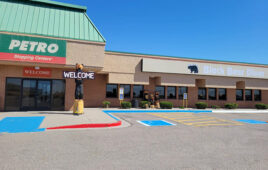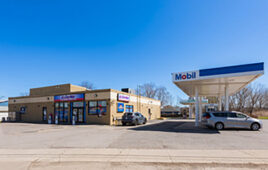
Chargeback Prevention Image Courtesy of Chargebacks911.
What can retailers do to combat the recent increase in chargeback fraud that has followed the October 2015 EMV liability shift?
A number of retailers have reported a drastic increase in chargebacks, many of them erroneous, since the October 2015 EMV liability shift.
According to a recent report from NACS, at the 2016 Conexxus Annual Meeting in May, Mike Lindberg, payment solutions manager for CHS Inc., reported that some smaller retailers have recorded $10,000 to $15,000 increases in weekly chargebacks, and some larger retailers have experienced $1 million in weekly chargebacks. According to Lindberg, the number one reason code for chargebacks since October has been “merchandise not received,” and some retailers have seen multiple chargebacks on the same credit card.
CHS has now altered its chargeback process, due to the large number of chargebacks that seem questionable, NACS reported. Retailers may need to consider implementing new processes to combat this fraud increase. Some options that retailers have include transaction risk scoring and zip code entry.
In addition to retailers working to address the chargeback problem, Visa Inc. has also taken steps to address the problem, NACS reported. Recognizing the problem with chargebacks, Visa Inc. has made modifications to its EMV certification and chargeback regulations. The company is now allowing all acquirers to self-certify their EMV solutions, removing the need for acquirers to submit test results to the brands. It also provides acquirers with flexibility to modify their own testing plans when needed.
NACS reported that Visa has announced the following updates to its chargeback policies:
- Minimum Chargeback Amount: Visa is implementing a $25 minimum limit for counterfeit chargebacks on U.S. domestic card transactions. This policy will be effective July 22, 2016, through April 2018.
- Maximum Chargebacks per Account: Visa will allow a maximum of 10 counterfeit fraud chargebacks per account in a 120-day period for domestic card transactions. This new policy will take effect with the October 2016 Visa Business Enhancements Release through April 2018.
According to the report from NACS, Visa estimates that the above changes will decrease all U.S. counterfeit fraud chargeback transactions in the Visa network by more than 40%. In addition to the two new policies mentioned above, on June 17, 2016, Visa will begin blocking counterfeit fraud chargebacks for Merchant Category Codes (MCCs) that are not eligible for the EMV liability shift, including automated fuel dispensers (AFDs) and ATMs.
Visa has also revealed that users of its Visa Transaction Advisor (VTA) service, which is used by more than 35,000 gas stations in the U.S., have experienced, on average, a 54% decline in counterfeit fraud rates, along with a 51% decline in lost and stolen fraud chargeback rates, NACS reported.
More retailers are currently working to become EMV compliant, and fuel retailers are working to upgrade or replace their fuel dispensers so that they can accept EMV chip card technology by the October 2017 liability shift; but, in the meantime, Bloomberg has reported that cyber thieves are taking advantage of the current situation. NACS reported that data from the Aite Group suggests that counterfeit fraud is expected to increase 12.5% in 2016, as thieves work to use stolen card data before the next liability shift.
However, Visa has claimed that its VTA service can help merchants identify and block high-risk transactions before they are processed, NACS reported.




